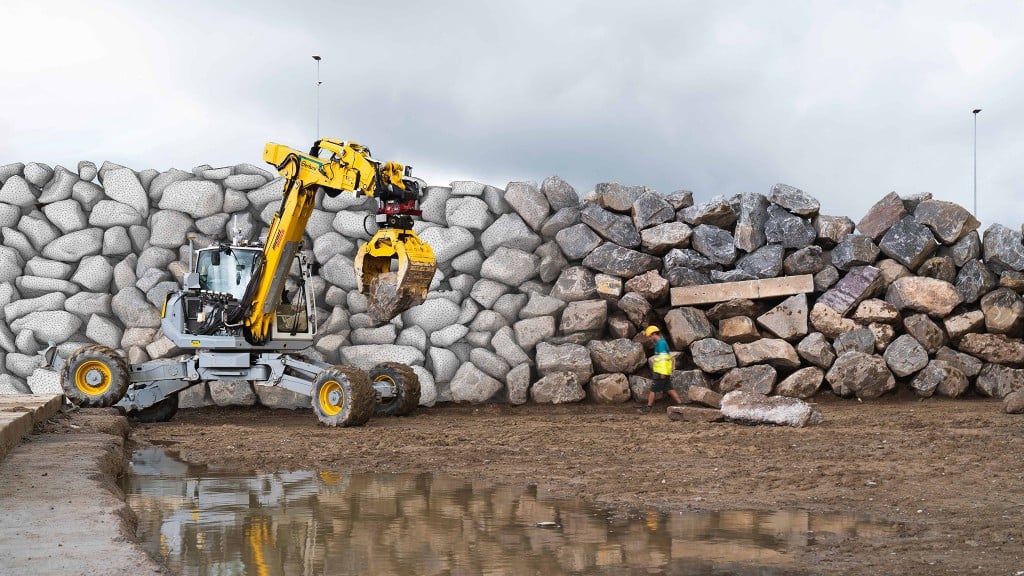(VIDEO) Advanced sensors and algorithms allow autonomous excavator to build stone structures
Watch a modified Menzi Muck excavator construct a stone wall

Researchers in Switzerland have trained an excavator to build dry stone walls by itself, reducing manual labour and demonstrating the benefits of automation in construction.
A team from ETH Zurich has developed an autonomous excavator - known as HEAP, or Hydraulic Excavator for an Autonomous Purpose - that is capable of using a variety of stones, recycled concrete, and similar materials to build dry stone structures such as walls. HEAP is a modified Menzi Muck M545 12-ton excavator fitted out for autonomous operation and advanced teleoperation. The excavator also features novel force-controllable hydraulic cylinders in the chassis that allow it to adapt to any terrain.
Key to the autonomous operation of the machine is a variety of sensors, including LIDAR, IMU, GNSS, and others. Those sensors feed data about the machine's movement and surroundings to a planning algorithm and custom software, which gives the excavator the ability to work autonomously on structures such as walls.
Dry stone structures are more energy efficient and use fewer materials than traditional concrete, making them more environmentally friendly. They are also easily deconstructed if needed, reducing the need for recycling when structures are removed.
Most recently, HEAP has constructed a six-metre-high wall 65 metres in length as part of a digitally planned and autonomously excavated park in Oberglatt, Switzerland.
Using its sensors, the excavator maps the site in 3D and locates on-site building blocks that can be used for construction. Specially designed tools and machine vision approaches allow the machine to scan and grab large stones in its immediate vicinity, sensing their weight and centre of gravity. It uses an algorithm to decide on the best place in the structure for that particular stone, and proceeds to install the stone itself.
The team of researchers included: Gramazio Kohler Research, the Robotics Systems Lab, Vision for Robotics Lab, and the Chair of Landscape Architecture. They developed this innovative design application as part of the National Centre of Competence in Research for Digital Fabrication (NCCR dfab).



